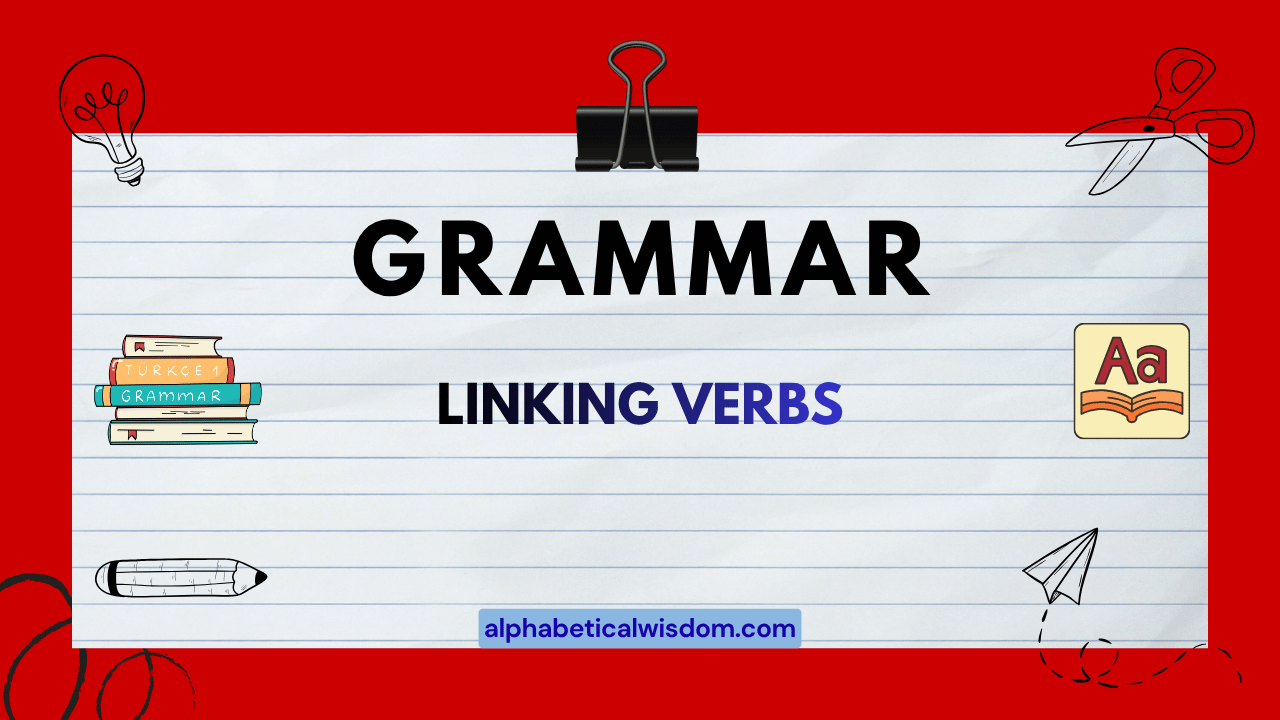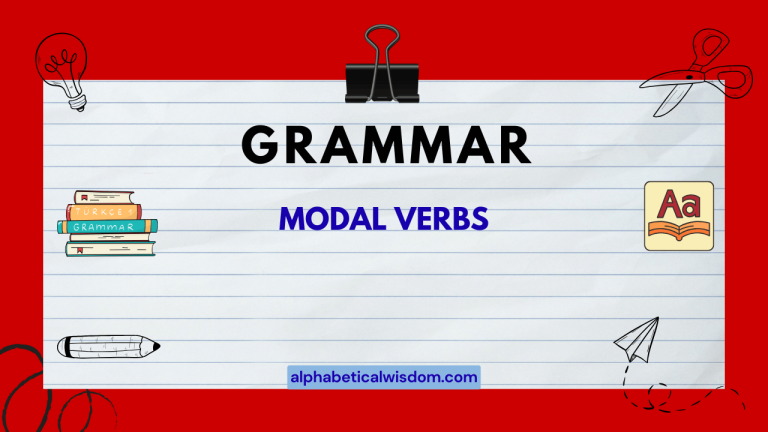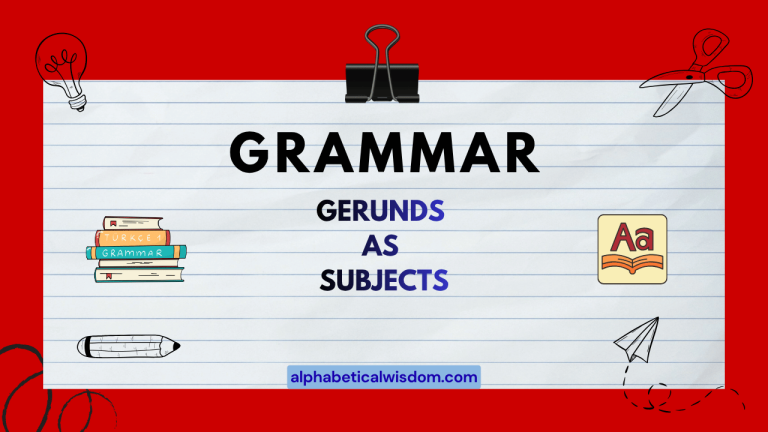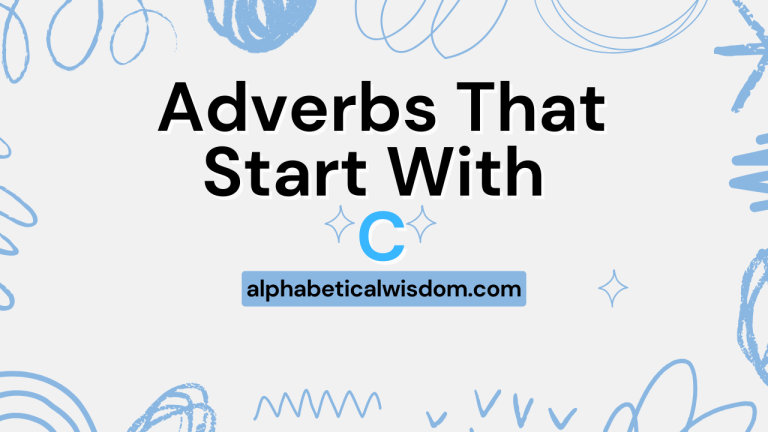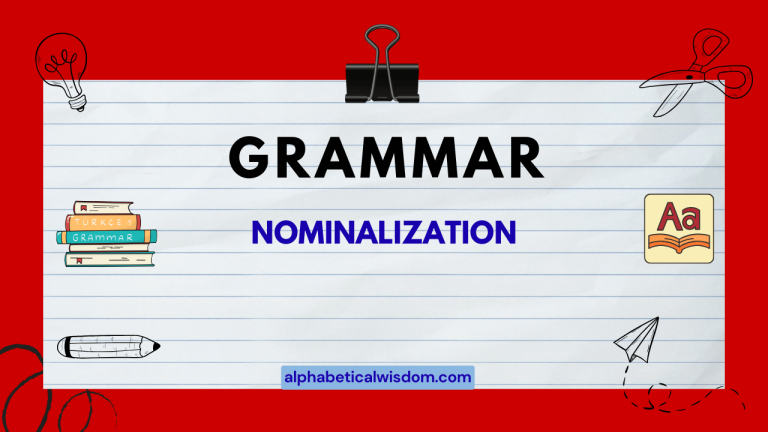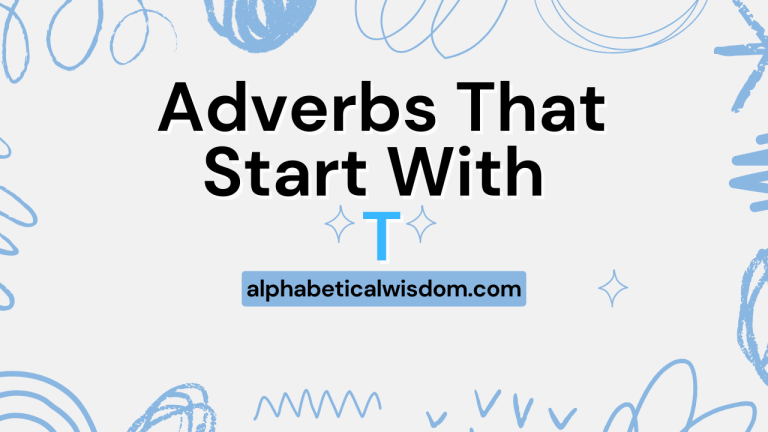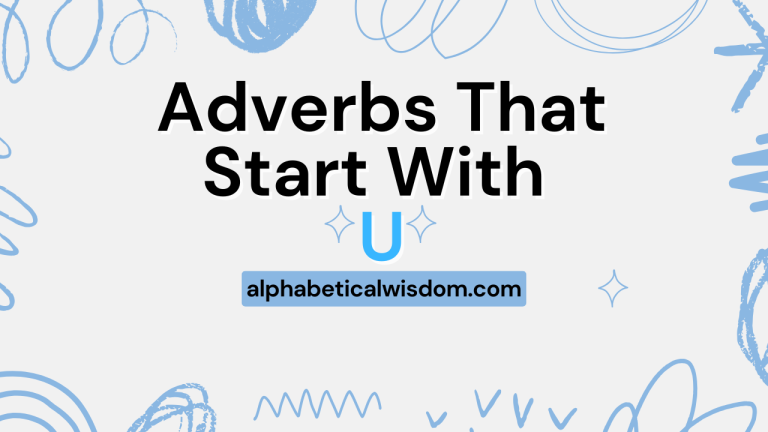Linking Verbs: A Comprehensive Guide with Examples & Exercises
Linking verbs are essential components of English grammar, connecting the subject of a sentence to a noun or adjective that describes or renames it. Understanding linking verbs is crucial for constructing clear, meaningful sentences and avoiding common grammatical errors.
This guide provides a comprehensive overview of linking verbs, including their definition, structure, types, usage rules, common mistakes, and practice exercises. This resource is designed for English language learners of all levels, from beginners seeking to grasp fundamental concepts to advanced students aiming to refine their writing skills.
Table of Contents
- Definition of Linking Verbs
- Structural Breakdown
- Types and Categories of Linking Verbs
- Examples of Linking Verbs
- Usage Rules
- Common Mistakes
- Practice Exercises
- Advanced Topics
- FAQ
- Conclusion
Definition of Linking Verbs
A linking verb, also known as a copula, connects the subject of a sentence to a subject complement. Unlike action verbs that describe what the subject does, linking verbs describe what the subject is or what it is like. The subject complement can be a noun, pronoun, or adjective that renames or describes the subject. Linking verbs do not express an action performed by the subject; instead, they establish a relationship between the subject and its complement.
Linking verbs are essential for providing descriptive information about the subject, offering insights into its qualities, state of being, or identity. They form a crucial part of sentence structure, enabling us to connect subjects with their attributes or definitions.
Without linking verbs, expressing these relationships would be significantly more challenging and less precise.
In essence, a linking verb acts as an equal sign between the subject and the subject complement. For example, in the sentence “The sky is blue,” the word “is” links the subject “sky” with the adjective “blue,” indicating the sky’s color.
Recognizing and correctly using linking verbs is fundamental to mastering English grammar and constructing grammatically sound and meaningful sentences.
Classification of Linking Verbs
Linking verbs can be broadly classified into two main categories: forms of the verb “to be” and sense verbs used as linking verbs. Each category has its own characteristics and usage patterns.
- Forms of “to be”: These are the most common linking verbs and include is, are, am, was, were, be, being, been. They indicate a state of being or existence.
- Sense verbs: These verbs describe sensory experiences but can also function as linking verbs when they connect the subject to a description of how it feels, looks, smells, tastes, or sounds. Examples include look, feel, smell, taste, sound, appear, seem, become, grow, remain, stay, turn.
Understanding these classifications is key to identifying linking verbs in different contexts. While forms of “to be” are almost always linking verbs, sense verbs can be either linking verbs or action verbs, depending on their usage in the sentence.
Function of Linking Verbs
The primary function of a linking verb is to connect the subject of a sentence to a subject complement. This complement provides additional information about the subject, either renaming it (as a predicate nominative) or describing it (as a predicate adjective).
Linking verbs do not show action; instead, they establish a connection or relationship between the subject and its description.
For instance, consider the sentence “She is a doctor.” Here, “is” is the linking verb connecting the subject “She” to the predicate nominative “doctor,” which renames the subject. In the sentence “The soup tastes delicious,” “tastes” is the linking verb connecting the subject “soup” to the predicate adjective “delicious,” which describes the subject.
Recognizing this function is crucial for distinguishing linking verbs from action verbs. If a verb connects the subject to a descriptive word or phrase, it is likely a linking verb.
If the verb shows an action performed by the subject, it is an action verb.
Contexts of Linking Verbs
Linking verbs appear in a variety of contexts, ranging from simple descriptive sentences to more complex constructions. They are commonly used to express states of being, feelings, opinions, and sensory experiences.
Understanding the context in which a linking verb is used can help clarify its function and meaning.
Here are some common contexts in which linking verbs are found:
- Describing states of being: He is happy. They are students.
- Expressing feelings: She feels sad. I am excited.
- Giving opinions: That seems right. It appears difficult.
- Describing sensory experiences: The coffee smells strong. The music sounds beautiful.
- Indicating changes of state: He became a teacher. The leaves turned brown.
By paying attention to the context, you can better identify linking verbs and understand how they contribute to the overall meaning of the sentence.
Structural Breakdown
Understanding the structure of sentences with linking verbs is essential for proper grammar. These sentences typically follow a specific pattern: Subject + Linking Verb + Subject Complement.
The subject complement is either a predicate nominative (a noun or pronoun that renames the subject) or a predicate adjective (an adjective that describes the subject).
Let’s break down each component:
- Subject: The noun or pronoun that the sentence is about.
- Linking Verb: The verb that connects the subject to the subject complement.
- Subject Complement: The noun, pronoun, or adjective that renames or describes the subject.
The subject complement is crucial because it provides information about the subject, completing the meaning of the sentence. Without it, the sentence would be incomplete and lack descriptive details.
Subject
The subject of a sentence is the noun or pronoun that performs the action (in the case of action verbs) or is described (in the case of linking verbs). When dealing with linking verbs, the subject is the entity being described or renamed by the subject complement.
It’s essential to identify the subject correctly to understand the relationship established by the linking verb.
Examples of subjects in sentences with linking verbs:
- The flower is beautiful.
- She is a talented artist.
- They are my friends.
In each of these examples, the underlined word or phrase is the subject, and the linking verb connects it to the subject complement.
Linking Verb
As previously defined, the linking verb connects the subject to the subject complement. It does not express an action but rather a state of being or a relationship.
The most common linking verbs are forms of “to be,” but remember that sense verbs can also function as linking verbs depending on the context.
Examples of linking verbs in sentences:
- The sky is blue.
- He seems tired.
- The food tastes delicious.
In these sentences, the underlined words are linking verbs, connecting the subjects (“sky,” “He,” and “food”) to their respective subject complements (“blue,” “tired,” and “delicious”).
Subject Complement
The subject complement is the noun, pronoun, or adjective that follows a linking verb and renames or describes the subject. It is a crucial element in sentences with linking verbs, as it provides essential information about the subject.
There are two types of subject complements: predicate nominatives and predicate adjectives.
- Predicate Nominative: A noun or pronoun that renames the subject.
Example: She is a doctor. (“doctor” renames “She”) - Predicate Adjective: An adjective that describes the subject.
Example: The flower is beautiful. (“beautiful” describes “flower”)
Identifying the type of subject complement is important for understanding the structure and meaning of the sentence. It helps clarify the relationship between the subject and its description or identity.
Types and Categories of Linking Verbs
Linking verbs can be categorized into two primary types: forms of the verb “to be” and sense verbs used as linking verbs. Understanding these categories can help you more easily identify and use linking verbs in your writing.
Forms of “to be”
The forms of “to be” are the most common linking verbs in English. They include am, is, are, was, were, be, being, and been. These verbs indicate a state of being or existence and connect the subject to a subject complement that describes or renames it.
Examples:
- I am a student.
- She is happy.
- They are friends.
- He was tired.
- We were late.
- To be or not to be, that is the question.
- The flowers are being watered.
- She has been a teacher for ten years.
These examples illustrate how the forms of “to be” connect the subject to a noun or adjective that provides more information about the subject’s state or identity.
Sense Verbs
Sense verbs describe sensory experiences but can also function as linking verbs when they connect the subject to a description of how it feels, looks, smells, tastes, or sounds. Common sense verbs that can act as linking verbs include look, feel, smell, taste, sound, appear, seem, become, grow, remain, stay, turn.
Examples:
- She looks tired.
- The fabric feels soft.
- The coffee smells strong.
- The soup tastes delicious.
- The music sounds beautiful.
- He appears confident.
- It seems likely.
- He became a doctor.
- The children grew tall.
- They remained silent.
- She stayed calm.
- The leaves turned brown.
It’s important to note that sense verbs can also be action verbs. To determine whether a sense verb is acting as a linking verb, check if it connects the subject to a descriptive word or phrase.
If it does, it is a linking verb.
Examples of Linking Verbs
To further illustrate the concept of linking verbs, let’s examine a variety of examples organized by category. These examples will help you understand how linking verbs function in different contexts and how to identify them in sentences.
Examples with Forms of “to be”
The forms of “to be” are versatile and widely used as linking verbs. Here are several examples:
Table 1: Examples with Forms of “to be”
| Sentence | Subject | Linking Verb | Subject Complement |
|---|---|---|---|
| I am a teacher. | I | am | teacher |
| She is happy. | She | is | happy |
| They are students. | They | are | students |
| He was tired. | He | was | tired |
| We were late. | We | were | late |
| The sky is blue. | Sky | is | blue |
| The cat is black. | Cat | is | black |
| The house is big. | House | is | big |
| The car is red. | Car | is | red |
| The food is delicious. | Food | is | delicious |
| My mom is a doctor. | Mom | is | doctor |
| My dad is a lawyer. | Dad | is | lawyer |
| That is my brother. | That | is | brother |
| That is my sister. | That | is | sister |
| The movie was boring. | Movie | was | boring |
| The book was interesting. | Book | was | interesting |
| The party was fun. | Party | was | fun |
| The concert was amazing. | Concert | was | amazing |
| The test was difficult. | Test | was | difficult |
| The game was easy. | Game | was | easy |
| The coffee is hot. | Coffee | is | hot |
| The tea is cold. | Tea | is | cold |
| The weather is nice. | Weather | is | nice |
| The room is clean. | Room | is | clean |
| My dog is friendly. | Dog | is | friendly |
| My teacher is kind. | Teacher | is | kind |
| The project is done. | Project | is | done |
| The food is ready. | Food | is | ready |
| The door is open. | Door | is | open |
| The window is closed. | Window | is | closed |
This table illustrates various sentences using forms of “to be” as linking verbs, showcasing the subject, linking verb, and subject complement in each case.
Examples with Sense Verbs
Sense verbs can function as linking verbs when they connect the subject to a description of how it feels, looks, smells, tastes, or sounds. Here are some examples:
Table 2: Examples with Sense Verbs as Linking Verbs
| Sentence | Subject | Linking Verb | Subject Complement |
|---|---|---|---|
| She looks tired. | She | looks | tired |
| The fabric feels soft. | Fabric | feels | soft |
| The coffee smells strong. | Coffee | smells | strong |
| The soup tastes delicious. | Soup | tastes | delicious |
| The music sounds beautiful. | Music | sounds | beautiful |
| He appears confident. | He | appears | confident |
| It seems likely. | It | seems | likely |
| He became a doctor. | He | became | doctor |
| The children grew tall. | Children | grew | tall |
| They remained silent. | They | remained | silent |
| She stayed calm. | She | stayed | calm |
| The leaves turned brown. | Leaves | turned | brown |
| The cake tastes sweet. | Cake | tastes | sweet |
| The room smells clean. | Room | smells | clean |
| The speaker sounds nervous. | Speaker | sounds | nervous |
| The plan seems perfect. | Plan | seems | perfect |
| The weather feels humid. | Weather | feels | humid |
| The story sounds interesting. | Story | sounds | interesting |
| The deal appears fair. | Deal | appears | fair |
| The situation remained tense. | Situation | remained | tense |
| The water feels cold. | Water | feels | cold |
| The idea sounds great. | Idea | sounds | great |
| The performance appeared flawless. | Performance | appeared | flawless |
| The food smells amazing. | Food | smells | amazing |
| The experiment turned successful. | Experiment | turned | successful |
| The music sounds relaxing. | Music | sounds | relaxing |
| The child grew restless. | Child | grew | restless |
| The problem seems complicated. | Problem | seems | complicated |
| The solution appears simple. | Solution | appears | simple |
| He remained hopeful. | He | remained | hopeful |
This table demonstrates how sense verbs connect the subject to a description of its sensory qualities or state.
Examples with Predicate Nominatives
Predicate nominatives rename the subject of the sentence. Here are some examples:
Table 3: Examples with Predicate Nominatives
| Sentence | Subject | Linking Verb | Predicate Nominative |
|---|---|---|---|
| She is a doctor. | She | is | doctor |
| He is the manager. | He | is | manager |
| They are my friends. | They | are | friends |
| This is my car. | This | is | car |
| That is her book. | That | is | book |
| John is a student. | John | is | student |
| Mary is the teacher. | Mary | is | teacher |
| We are a team. | We | are | team |
| You are the winner. | You | are | winner |
| It is a mystery. | It | is | mystery |
| She is a writer. | She | is | writer |
| He is an engineer. | He | is | engineer |
| They are musicians. | They | are | musicians |
| This is the answer. | This | is | answer |
| That is the question. | That | is | question |
| He became the president. | He | became | president |
| She remained the leader. | She | remained | leader |
| They are the experts. | They | are | experts |
| You are my hero. | You | are | hero |
| It is a solution. | It | is | solution |
| The cat is a pet. | Cat | is | pet |
| The dog is a friend. | Dog | is | friend |
| The book is a guide. | Book | is | guide |
| The movie is a classic. | Movie | is | classic |
| The song is a hit. | Song | is | hit |
| The car is a vehicle. | Car | is | vehicle |
| The house is a home. | House | is | home |
| The river is a landmark. | River | is | landmark |
| The city is a metropolis. | City | is | metropolis |
| The country is a nation. | Country | is | nation |
This table shows how predicate nominatives rename the subject, providing a different way to identify it.
Examples with Predicate Adjectives
Predicate adjectives describe the subject of the sentence. Here are some examples:
Table 4: Examples with Predicate Adjectives
| Sentence | Subject | Linking Verb | Predicate Adjective |
|---|---|---|---|
| The sky is blue. | Sky | is | blue |
| She is happy. | She | is | happy |
| He seems tired. | He | seems | tired |
| The soup tastes delicious. | Soup | tastes | delicious |
| The music sounds beautiful. | Music | sounds | beautiful |
| The flower is beautiful. | Flower | is | beautiful |
| The book is interesting. | Book | is | interesting |
| The movie was boring. | Movie | was | boring |
| The weather is nice. | Weather | is | nice |
| The room is clean. | Room | is | clean |
| The coffee is hot. | Coffee | is | hot |
| The tea is cold. | Tea | is | cold |
| The fabric feels soft. | Fabric | feels | soft |
| The cake tastes sweet. | Cake | tastes | sweet |
| The room smells clean. | Room | smells | clean |
| The water feels cold. | Water | feels | cold |
| The food smells amazing. | Food | smells | amazing |
| The child grew restless. | Child | grew | restless |
| The problem seems complicated. | Problem | seems | complicated |
| The experiment turned successful. | Experiment | turned | successful |
| The solution appears simple. | Solution | appears | simple |
| He remained hopeful. | He | remained | hopeful |
| She looks confident. | She | looks | confident |
| The speaker sounds nervous. | Speaker | sounds | nervous |
| The plan seems perfect. | Plan | seems | perfect |
| The weather feels humid. | Weather | feels | humid |
| The story sounds interesting. | Story | sounds | interesting |
| The deal appears fair. | Deal | appears | fair |
| The situation remained tense. | Situation | remained | tense |
| The idea sounds great. | Idea | sounds | great |
This table illustrates how predicate adjectives describe the subject, providing more information about its qualities or characteristics.
Usage Rules
Proper usage of linking verbs is essential for clear and correct writing. Several rules govern their use, including subject-verb agreement and the correct choice of subject complements.
Understanding these rules will help you avoid common grammatical errors and improve your writing skills.
Subject-Verb Agreement
As with all verbs, linking verbs must agree in number with their subjects. This means that singular subjects take singular verbs, and plural subjects take plural verbs.
This is a fundamental rule of English grammar.
Examples:
- He is a doctor. (Singular subject, singular verb)
- They are students. (Plural subject, plural verb)
- I am a teacher. (Singular subject, singular verb)
- We are friends. (Plural subject, plural verb)
Pay close attention to subject-verb agreement when using linking verbs, especially when the subject is a collective noun or an indefinite pronoun.
Predicate Nominatives and Pronouns
When a pronoun is used as a predicate nominative, it should be in the nominative case (e.g., I, he, she, we, they). This is because the predicate nominative renames the subject, which is also in the nominative case.
Correct:
- It is I.
- It is he.
- It is she.
- It is we.
- It is they.
Incorrect:
- It is me.
- It is him.
- It is her.
- It is us.
- It is them.
Although the incorrect forms are commonly used in informal speech, it’s important to use the correct nominative case in formal writing and speaking.
Linking Verbs vs. Action Verbs
Distinguishing between linking verbs and action verbs is crucial. An action verb shows what the subject does, while a linking verb connects the subject to a subject complement that describes or renames it.
Some verbs can function as both linking verbs and action verbs, depending on the context.
Examples:
- Linking Verb: She looks tired. (looks connects “She” to the description “tired”)
- Action Verb: She looks at the painting. (looks describes the action of looking)
- Linking Verb: The soup tastes delicious. (tastes connects “soup” to the description “delicious”)
- Action Verb: He tastes the soup. (tastes describes the action of tasting)
To determine whether a verb is acting as a linking verb, check if it connects the subject to a descriptive word or phrase. If it does, it is a linking verb.
If the verb shows an action performed by the subject, it is an action verb.
Adjectives vs. Adverbs
With linking verbs, use adjectives to describe the subject, not adverbs. Adverbs modify verbs, adjectives, or other adverbs, but they do not describe the subject in the same way that adjectives do.
Correct:
- She is happy. (Adjective describing “She”)
- The soup tastes delicious. (Adjective describing “soup”)
Incorrect:
- She is happily. (Adverb modifying “is,” which is not appropriate)
- The soup tastes deliciously. (Adverb modifying “tastes,” which is not appropriate)
Using adjectives with linking verbs ensures that the subject is properly described, maintaining grammatical correctness.
Common Mistakes
Even experienced English speakers sometimes make mistakes with linking verbs. Understanding these common errors can help you avoid them in your own writing.
Incorrect Pronoun Case
One common mistake is using the objective case of a pronoun (e.g., me, him, her, us, them) instead of the nominative case (e.g., I, he, she, we, they) as a predicate nominative.
Incorrect: It is me.
Correct: It is I.
Remember to use the nominative case when the pronoun renames the subject.
Confusing Linking and Action Verbs
Another common mistake is confusing linking verbs with action verbs, especially when dealing with sense verbs. This can lead to incorrect sentence structure and meaning.
Incorrect: She looks sadly. (Using an adverb with a linking verb)
Correct: She looks sad. (Using an adjective with a linking verb)
Correct: She looks sadly at the photo. (Using an adverb with an action verb. She is performing the action of looking in a sad way.)
Always check whether the
verb connects the subject to a description or shows an action.
Misusing Adjectives and Adverbs
Using adverbs instead of adjectives to describe the subject is a frequent error with linking verbs.
Incorrect: The flower smells sweetly.
Correct: The flower smells sweet.
Adjectives should be used to describe the subject’s qualities or characteristics.
Subject-Verb Disagreement
Failing to ensure subject-verb agreement is a common error, especially when the subject and verb are separated by other words.
Incorrect: The quality of the apples are poor.
Correct: The quality of the apples is poor.
Ensure that the verb agrees with the actual subject of the sentence, not a noun that is part of a modifying phrase.
Practice Exercises
To reinforce your understanding of linking verbs, complete the following exercises. Identify the linking verbs and subject complements in each sentence.
Exercise 1: Identifying Linking Verbs
Identify the linking verb in each sentence.
- The coffee smells strong.
- She is a talented musician.
- The weather seems pleasant today.
- He became a successful entrepreneur.
- They are my best friends.
Answers:
- smells
- is
- seems
- became
- are
Exercise 2: Identifying Subject Complements
Identify the subject complement in each sentence.
- The sky is blue.
- She feels happy.
- He is a doctor.
- The food tastes delicious.
- They are students.
Answers:
- blue
- happy
- doctor
- delicious
- students
Exercise 3: Correcting Mistakes
Correct the mistakes in the following sentences.
- It is me.
- She looks sadly.
- The flowers smells sweetly.
- The quality of the apples are poor.
Answers:
- It is I.
- She looks sad.
- The flowers smell sweet.
- The quality of the apples is poor.
Exercise 4: Fill in the Blanks
Fill in the blanks with an appropriate linking verb.
- I _____ a student.
- She _____ happy today.
- The soup _____ delicious.
- They _____ my friends.
- He _____ a doctor now.
Answers:
- I am a student.
- She is happy today.
- The soup tastes delicious.
- They are my friends.
- He is/became a doctor now.
Advanced Topics
For advanced learners, exploring more complex aspects of linking verbs can further refine your understanding and usage. These topics include the subjunctive mood with linking verbs and nuanced distinctions between similar verbs.
Subjunctive Mood
The subjunctive mood is used to express hypothetical situations, wishes, or suggestions. With linking verbs, the subjunctive mood is often used after verbs such as “suggest,” “recommend,” “insist,” and “demand.” In these cases, the verb “be” takes the base form, regardless of the subject.
Example:
- I suggest that he be present at the meeting.
- It is essential that she be on time.
The subjunctive mood is less common in modern English but remains important in formal writing and certain idiomatic expressions.
Nuanced Distinctions Between Similar Verbs
Some linking verbs have subtle differences in meaning that can affect their usage. For example, “seem” and “appear” both indicate a perception or impression, but “seem” often implies a more considered judgment, while “appear” suggests a more superficial observation.
Examples:
- He seems confident (implying a deeper assessment).
- He appears confident (implying a visual impression).
Understanding these nuances can help you choose the most appropriate linking verb to convey your intended meaning.
Linking Verbs in Complex Sentences
Linking verbs can also appear in complex sentences, where they connect the subject of an independent clause to a subject complement within a dependent clause. This requires careful attention to sentence structure and clarity.
Example:
- The reason he is successful is that he is dedicated.
In this sentence, “is” links “reason” to the entire clause “that he is dedicated,” which serves as the subject complement.
FAQ
What is the difference between a linking verb and an action verb?
A linking verb connects the subject to a subject complement that describes or renames it, while an action verb shows what the subject does. Linking verbs do not express an action performed by the subject.
How can I identify a linking verb in a sentence?
Check if the verb connects the subject to a descriptive word or phrase (adjective) or renames it (noun or pronoun). If it does, it is likely a linking verb.
What are the most common linking verbs?
The most common linking verbs are forms of “to be” (am, is, are, was, were, be, being, been) and sense verbs (look, feel, smell, taste, sound, appear, seem, become, grow, remain, stay, turn).
Can a verb be both a linking verb and an action verb?
Yes, some verbs, especially sense verbs, can function as both linking verbs and action verbs, depending on the context. Check if the verb connects the subject to a description or shows an action.
What is a subject complement?
A subject complement is a noun, pronoun, or adjective that follows a linking verb and renames or describes the subject. It completes the meaning of the sentence by providing additional information about the subject.
Conclusion
Understanding and correctly using linking verbs is crucial for constructing clear, grammatically sound sentences. By mastering the definition, structure, types, usage rules, and common mistakes associated with linking verbs, you can significantly improve your English writing and communication skills.
Whether you are a beginner or an advanced learner, this comprehensive guide provides the knowledge and practice you need to confidently use linking verbs in various contexts. Keep practicing, and you’ll find that your writing improves.
